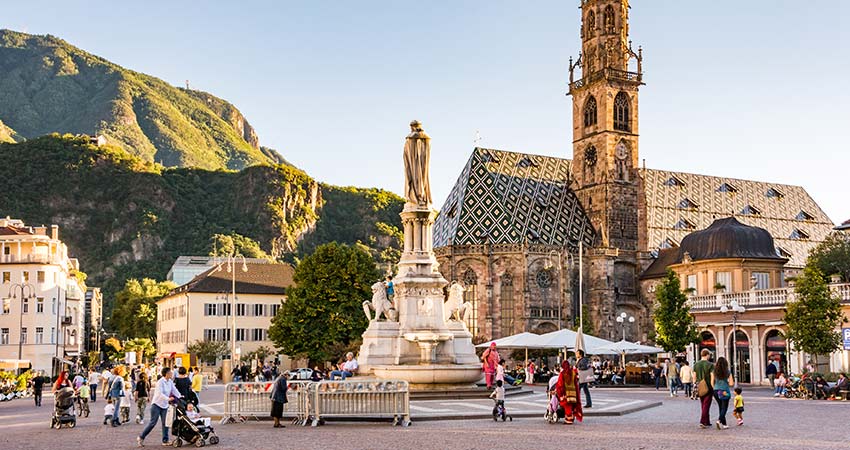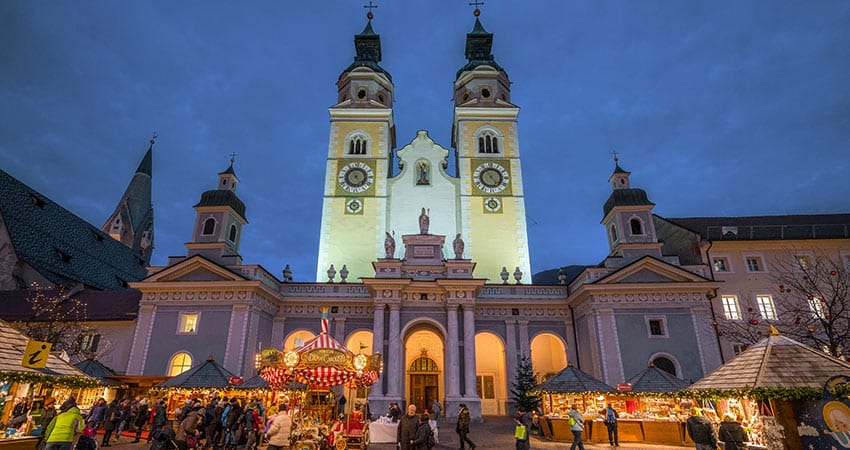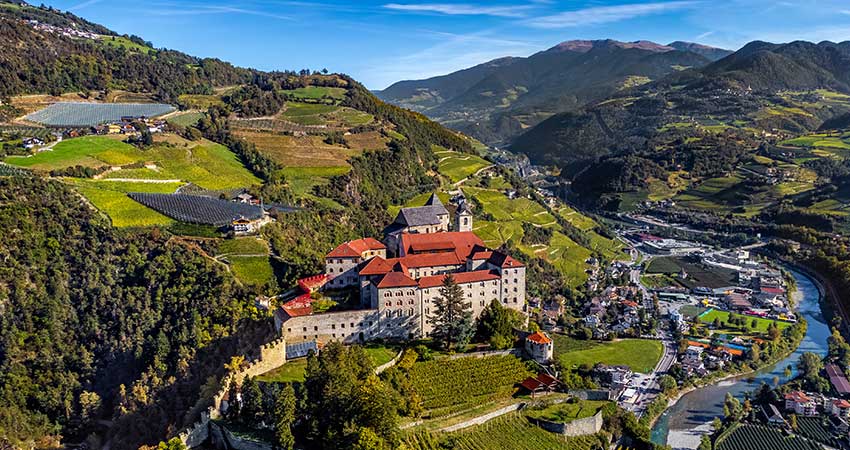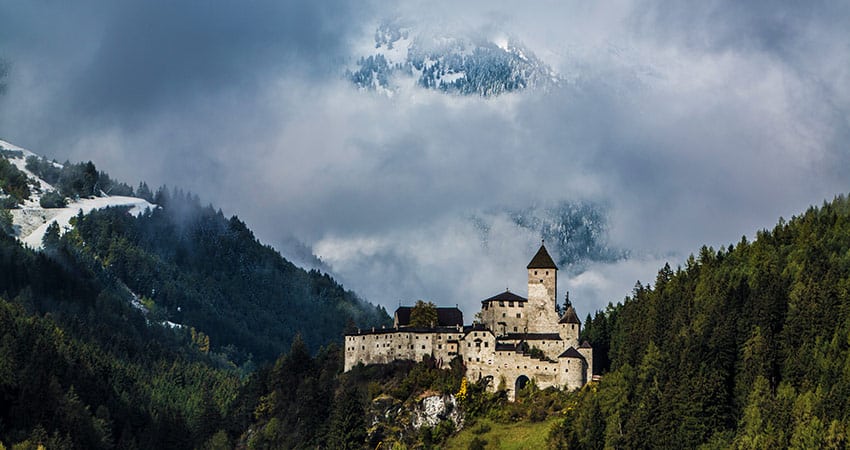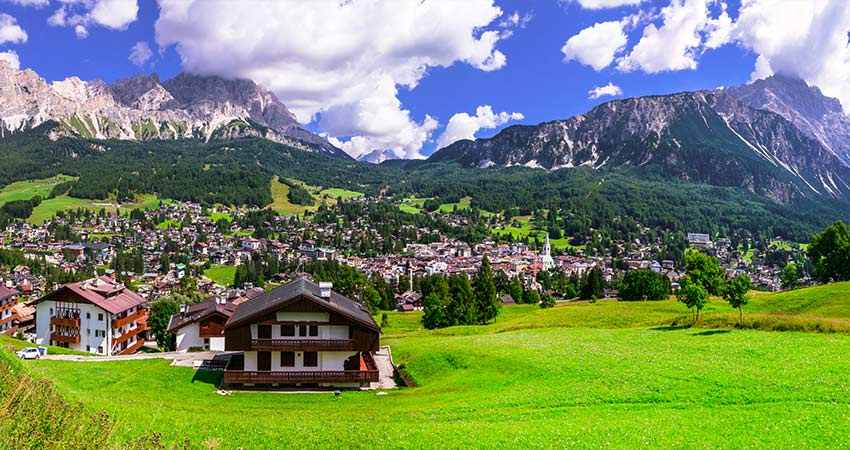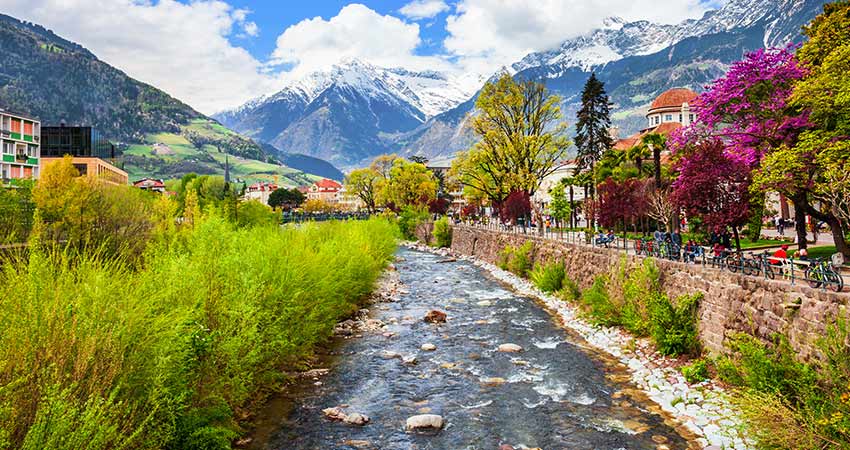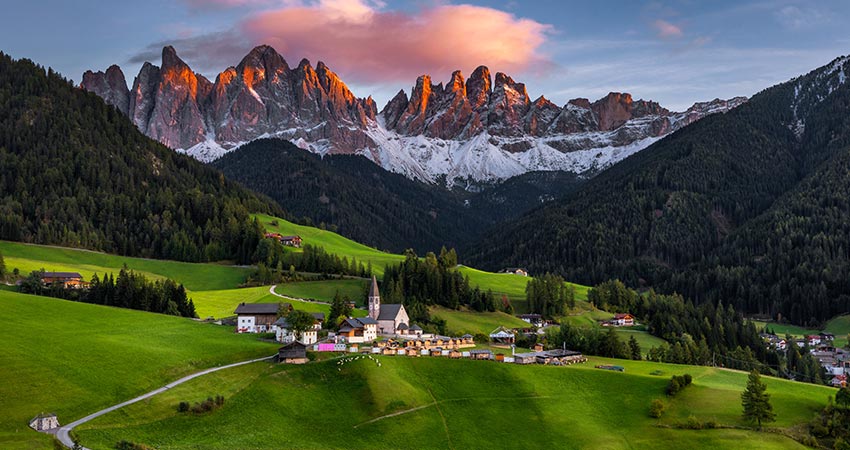You want to visit Italy, perhaps for the first time or maybe you’ve been there before, but you’d like to experience Italy’s lesser-known side. (And you still want terrific Italian cuisine, history, and culture.) We suggest that you consider the Dolomites. A magnificent mountain range in northeastern Italy, this region is a UNESCO World Heritage site, filled with stunning beauty and terrific towns.
It is situated in the regions of Veneto, Trentino-Alto, and Friuli Venezia Giulia. The provinces include Belluno, Vicenza, Verona, Trentino, South Tyrol, Udine, and Pordenone. For nature lovers, the Dolomiti Bellunesi National Park is perfect for adventuring.
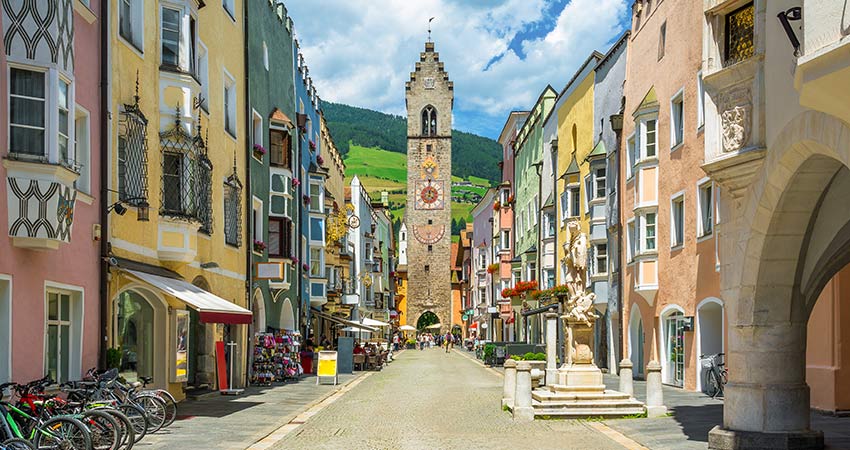
Favored by today’s mountaineers, hunters and gatherers climbed the highest peaks for thousands of years. The Adamello-Brenta UNESCO Global Geopark, where two mountain ranges meet, is breathtaking. There are nine other large parks, totaling hundreds of thousands of acres. In the winter, the Dolomites have ideal skiing, hiking, and cycling. In the summer, you can go on easy day hikes, picnic by crystalline lakes, and visit the towns—each historic village is unique! Some favorites are listed below.
Bolzano
Bolzano, the capital of Alto Adige, is known as the gateway between Italian-speaking Trentino and German-speaking Sudtirol (South Tyrol). Expect lush parks, gentle promenades, flowers, unusual plants, and the dramatic Dolomites rising in the distance. Wander through medieval arcades, called Laubengasse, and the lake shore. This is a terrific base for hiking. The Rittnerbahn Railway carries you to a high plateau—visit the rose garden above Bozen.
For those who love cultural travel, the Piazza Walther has an imposing 15th century Gothic Duomo. The roof and spire are decorated with an entire palette of mosaics. Go inside, and find the wine door, carved with figures working in vineyards. Wine is an important part of Bolzano’s economy! The Museo Archeologico has artifacts from the Stone Age, Bronze Age, Iron Age, Roman era, and the time of Charlemagne.
Bring your appetite to Bolzano. Canederil are hearty bread dumplings, mixed with cheese and ham, and they’re a specialty. So is apple strudel with flaky pastry, pine nuts, luscious apples, and whipped cream. Hungarian goulash, spicy and meaty, is the ideal meal when you visit Bolzano in winter. Vineyards and wineries stretch from the edge of town to the foothills. Their rich, velvety wines are luscious.
Bressanone / Brixen
About 25 miles north of Bolzano, Bressanone (Brixen in German) is the oldest town in South Tyrol. The Old Town has colonnades, arcades, arches, and lovely lanes. The Chiostro de Bressanone is a Romanesque Cathedral that would be easy to pass by. But walk inside and prepare to be amazed. There are medieval frescoes, and the Diocesan Museum exhibits both Renaissance and medieval art. The Gothic White Tower is a must.
Churches, chapels, and the Hofburg tell the medieval story of Bressanone. From the 13th century, the Hofburg was the episcopal residence, which gave the town a princely court and administration. The Cathedral still rises above the city. The city’s diocese lived in a castle here until 1803. Step outside the cathedral gates, and there are a delightful number of shops, cafes, and traditional restaurants. Picnic in a park and enjoy the number of sunny days in this all-year resort town.
Chiusa / Klausen
A charming town, Chiusa is considered to be one of the most beautiful in Italy. Situated on the banks of the Eisack River, this lush valley village has Gothic churches and traditional architecture. The artist, Albrecht Dürer, fell in love with Chiusa and other artists followed. Stroll the lanes, and you’ll see his engraving of the Greek goddess, Nemesis, standing on a sphere above the village. The city’s ancient heart is a treasure trove of art and culture, set against a backdrop of chestnut trees and vineyards. While there, visit Säben, a Benedictine nunnery founded in 1687. The views are out of this world.
Brunico / Bruneck
Sitting prettily in the Pustertal Valley, the cornerstone for Brunico was laid in 1256 AD. A medieval castle looks over the city, and wandering its narrow lanes is pure enchantment. Visit one of the six Messner Mountain Museums—their purpose is to educate visitors about “Man’s encounter with mountains.” You’ll discover the science of mountains and glaciers, the history of mountaineering and rock climbing, the stories of mythical mountains, as well as the history of people who live, and thrive, in mountains. Ski enthusiasts will find slopes that are suitable for every level, from novice to the most advanced.
The Museo Etnografico di Teodone is a folklore museum. Step inside for displays that include local costumes, traditional agricultural life in the valley, and the chance to visit a 16th century farmhouse and barn. Brunico is an all-season holiday town, with plenty of shopping, restaurants, and side trips.
Cortina d’Ampezzo
Called “The Pearl of the Dolomites,” Cortina d’Ampezzo is situated in the Dolomites UNESCO World Heritage site. One of Italy’s top ski resorts, due to hosting the 1956 winter Olympics, Cortina offers downhill and cross-country skiing, a ski jump, bobsleigh run, an Olympic ice stadium, swimming pools, tennis courts, and horseback riding.
During the summer time, Cortina is terrific for walking and hiking. Maps of trails and guided walks are both available. During the winter or the summer, the city has beautiful shopping on its main street, Corso Italia. Enjoy prosecco bars, cocktails, wine and cured meats, après ski, and dancing through the night!
Merano
Known as the “holiday location between palm trees and glaciers,” Merano is another all-season destination that travelers adore. This gorgeous spa town attracts visitors from Austria, Germany, and Italy. (The Kurhaus, or Spa Hall, built in 1914 now serves as a venue for concerts.) Merano was afavorite of Romans—follow the north bank of the River Passiro, enjoying flower gardens as you go. This path will lead you to the Ponte Romano, a Roman Bridge.
Two miles north of Merano is the 12th century Castel Tirolo. This exceptional castle dominated the entire region of Tyrol. The Castello Principesco, located in the heart of Merano, is a small gem. Located between the arcades and the stairway to the Tappeiner promenade, enter through a small door. Walk inside, and you’ll see how nobility lived—their belongings were left behind. It is a small wonder.
When you’re in the mood for discovering the other side of Italy, the Dolomites might be your perfect choice. Striking natural beauty, one of the most glorious mountain ranges in the world, awarded the status of a UNESCO World Heritage site, cultural riches, adventure, and historic villages all wait to be explored.
Let your Destination Expert know that you’d like to explore Italy’s mountains. Just 2 ½ hours from Venice, this region is a magnificent dream come true.


